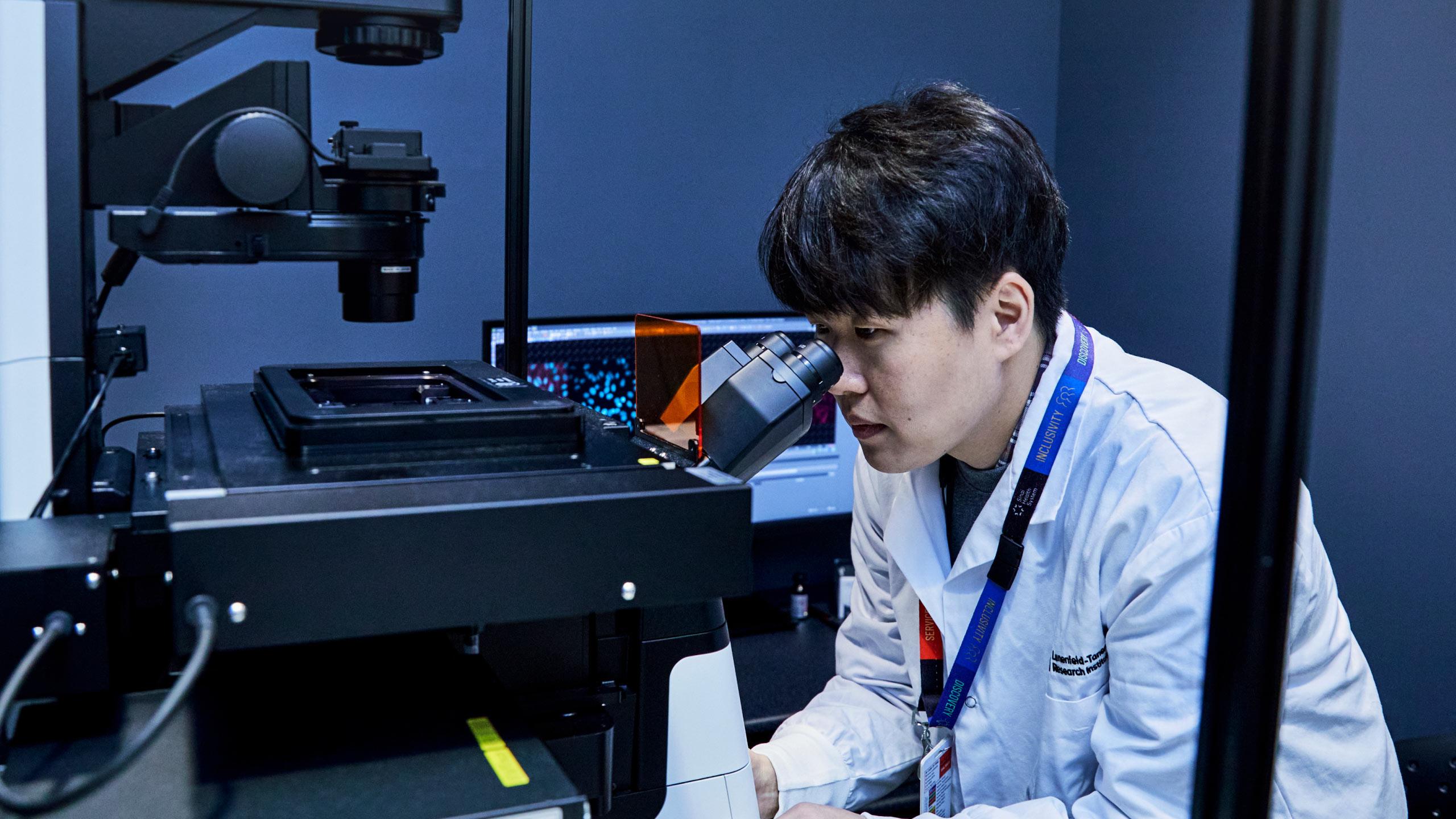Advanced Prenatal Diagnostic Tests
Overview
The following are highly accurate tests that can diagnose certain genetic conditions in a fetus.
If the chances that your pregnancy might be affected by a genetic condition are higher than average, your health-care provider might recommend one of these tests.
Please talk to your health-care provider to learn more about the risks and limitations of these tests.
Types of prenatal diagnostic tests
Amniocentesis
Amniocentesis is a very accurate diagnostic test used to identify certain birth defects and genetic conditions in a fetus.
During the procedure, a small sample of the amniotic fluid surrounding the fetus in the uterus is drawn for testing.
You may choose to have an amniocentesis if your health-care provider says you are at risk of having a baby with conditions such as:
- Down syndrome
- Trisomy 18
- Cystic fibrosis (CF)
- Spina bifida
- Other conditions
What to expect
Amniocentesis can be performed by an obstetrician (OB) after you are 15.5 weeks pregnant. The procedure takes about five minutes and is followed by a 30-minute resting period.
Using ultrasound for guidance, the OB will carefully insert a thin needle through your belly and into your uterus to remove about one tablespoon of amniotic fluid from the area around the fetus. Removing this small amount of fluid is harmless to both you and the fetus.
If you have an Rh-negative blood type, you will receive an immunoglobulin injection at the time of the procedure to prevent the development of antibodies that could harm the fetus.
Some patients say they feel no pain during the amniocentesis, while others say they feel some pressure and cramping when the needle enters the uterus. After the procedure, you may experience cramping, spotting or leakage of amniotic fluid. We recommend avoiding lifting or standing on your feet for long periods of time for several hours after the procedure.
The amniotic fluid that is collected contains fetal cells. The cells are grown (cultured) in a laboratory for 10 to 12 days and then tested for genetic conditions and birth defects.
You will usually hear about your results from your health-care provider within a few weeks.
Risks and limitations
Serious risks associated with amniocentesis are rare and may include:
- A slight increase in the risk of miscarriage by 0.1 to 0.3 per cent
- Within the first 12 hours after the procedure, possible leaking of amniotic fluid, spotting or cramping
- Rarely, the possibility of developing an infection
- A very small risk of injury to the fetus
Call your primary care provider or visit the nearest emergency department if you experience a fever, bleeding or persistent cramping after an amniocentesis.
While amniocentesis is a valuable diagnostic tool, it does not provide a complete picture of all potential genetic conditions or birth defects that could affect the fetus. It primarily focuses on detecting certain genetic conditions.
In rare instances, amniocentesis may need to be repeated if there was not enough amniotic fluid collected or if there were technical issues in the laboratory. This does not necessarily indicate a problem with the pregnancy.
Learn more about amniocentesis from Prenatal Screening Ontario.
Chorionic villus sampling (CVS)
CVS is a highly accurate diagnostic test that can diagnose certain genetic conditions in a fetus.
CVS involves taking a small sample of cells from the developing placenta for testing.
You may consider having CVS if a genetic counsellor says you are at risk for having a baby with genetic conditions such as:
- Down syndrome
- Trisomy 18
- Cystic fibrosis (CF)
- Sickle cell disease
- Other conditions
What to expect
CVS is usually performed by an obstetrician (OB) between 11 and 14 weeks of pregnancy. The procedure takes about 20 minutes and is followed by a 30-minute resting period.
During the procedure, the OB will use ultrasound to check the fetus and guide the CVS. There are two approaches to collecting the tissue sample: through the vagina or through the abdomen.
Using the vaginal approach, a thin tube is carefully inserted through the vagina and cervix into the uterus to collect a small tisssue sample from the placenta.
Using the approach through the abdomen, the OB inserts a thin needle through your belly into the uterus to get a small tissue sample from the placenta.
If you have an Rh-negative blood type, you will also receive a Rho(D) immune globulin injection at the time of the procedure. This prevents the development of antibodies that can harm the fetus.
Some patients may experience light cramping or spotting after the procedure. We recommend avoiding lifting or standing on your feet for extended periods of time for several hours after the procedure.
The collected placental tissue contains the same genetic information as the fetus. This tissue is grown (cultured) in a laboratory and then tested for certain genetic conditions.
Your health-care provider will call you within two weeks to explain your test results.
Risks and limitations
Serious risks associated with CVS are rare and may include:
- A one per cent increase in the risk of miscarriage
- Spotting or cramping in the first two days after the procedure
- Rarely, the possibility of developing an infection
Call your primary care provider or visit the nearest emergency department if you experience a fever, bleeding or persistent cramping after CVS.
While some reports have linked CVS to limb abnormalities in fetuses, the World Health Organization reports there is no increased risk when CVS is performed by an experienced physician after 10 weeks of pregnancy.
While CVS is a valuable diagnostic tool, it does not provide a complete picture of all potential genetic conditions or birth defects that could affect the fetus.
For example, unlike amniocentesis, CVS cannot detect open spina bifida (a birth defect involving the spine). CVS primarily focuses on detecting certain genetic conditions.
In some cases, CVS may need to be repeated if there was not enough tissue collected or if there was difficulty interpreting the results. This does not mean there is a problem with your pregnancy.
Learn more about CVS from Prenatal Screening Ontario.







